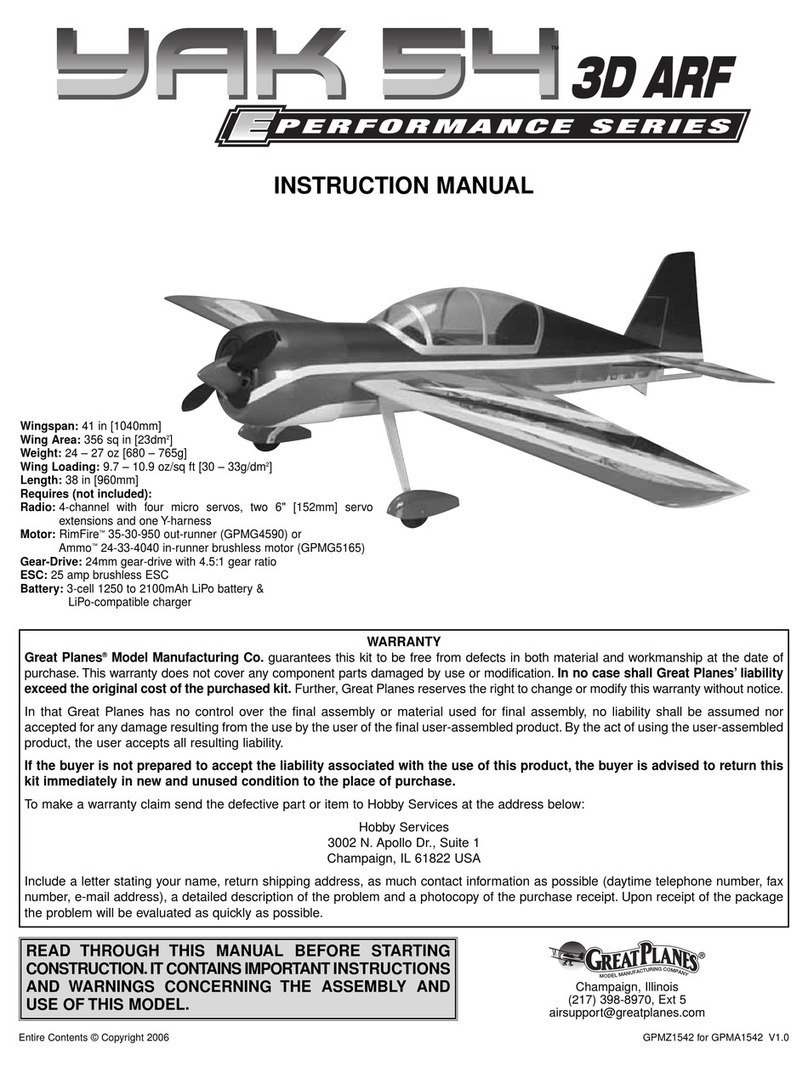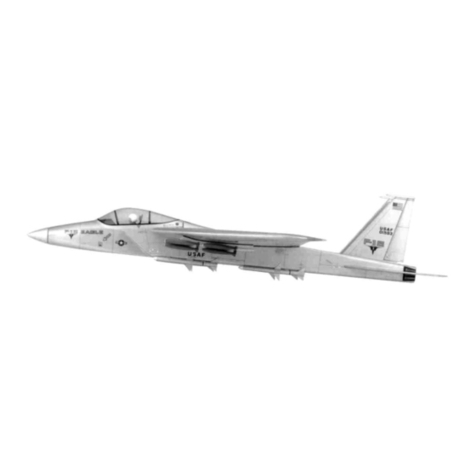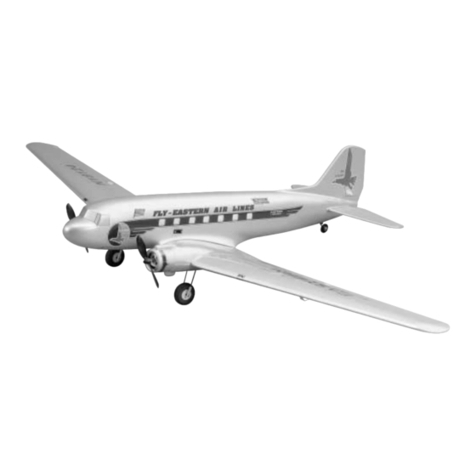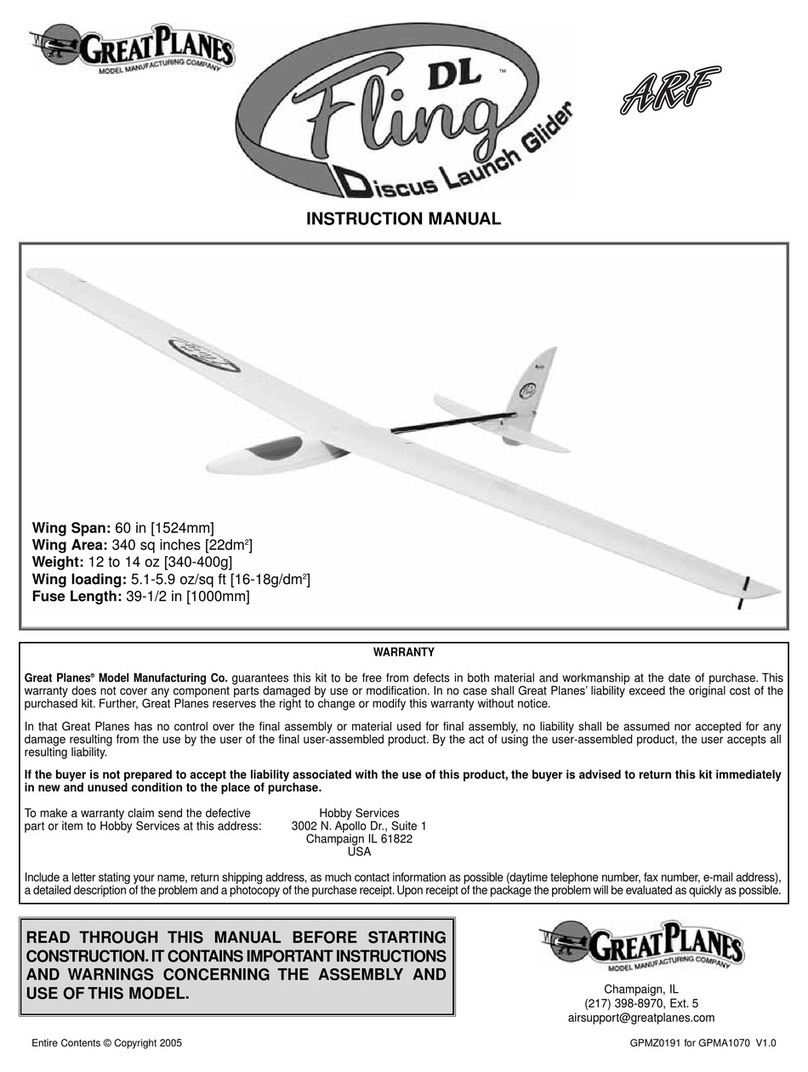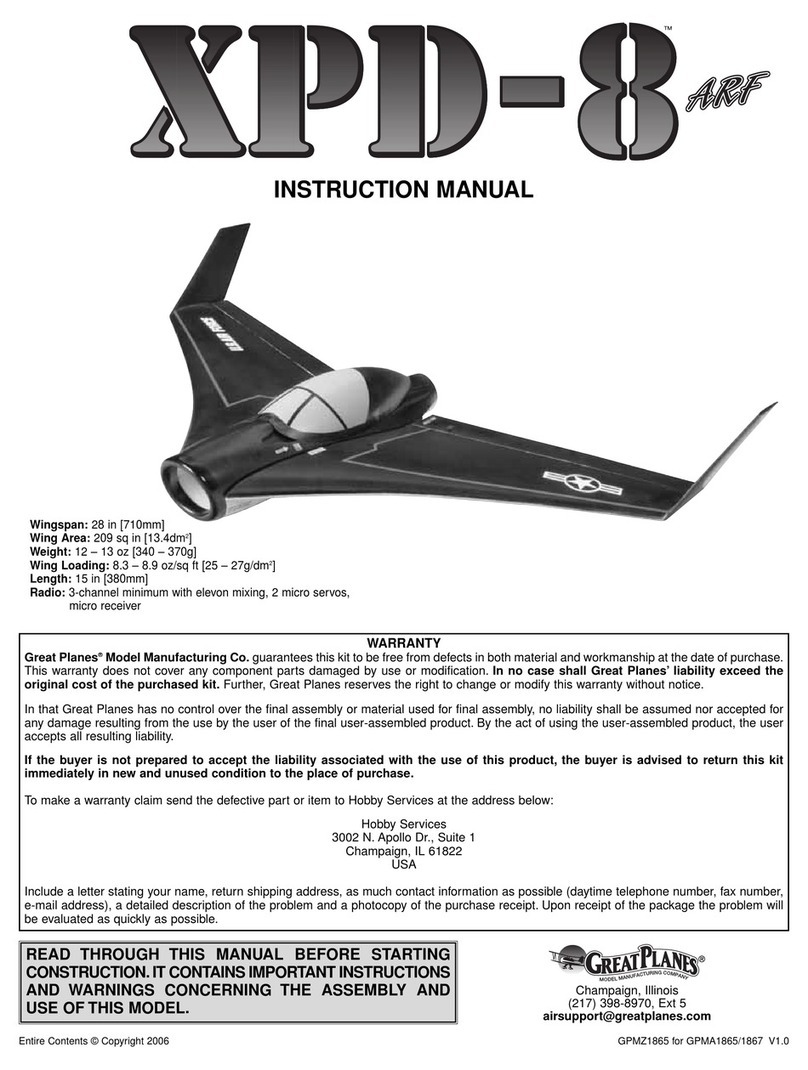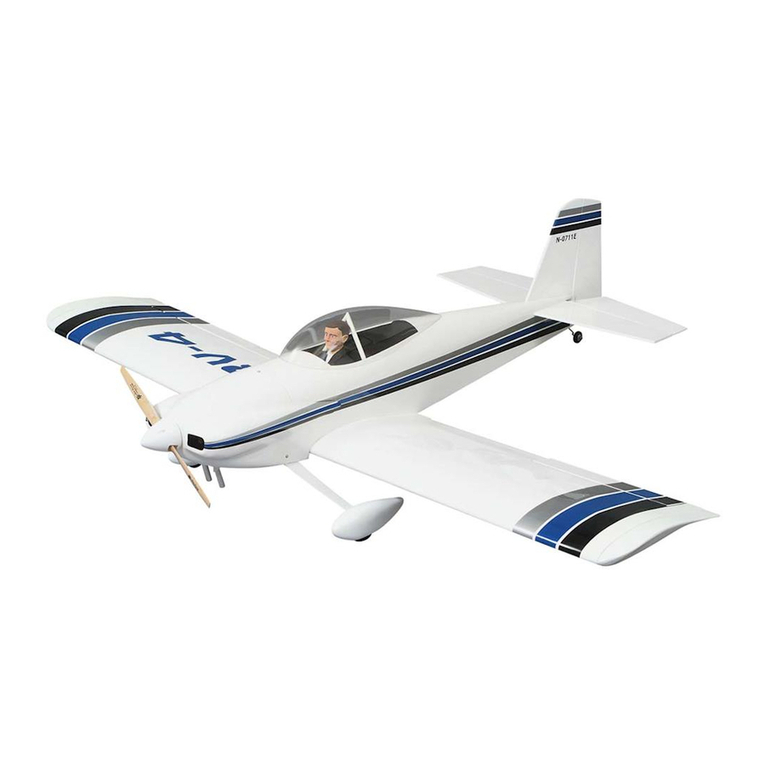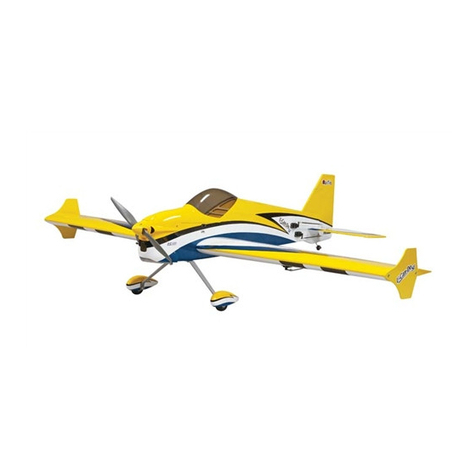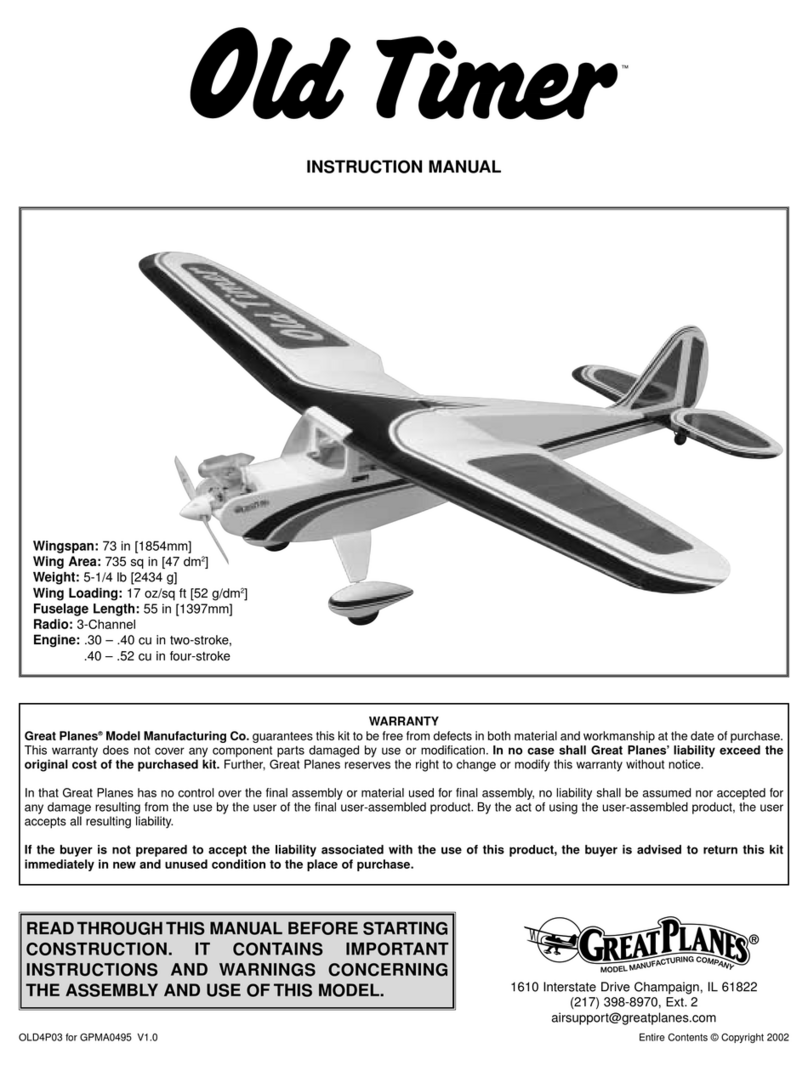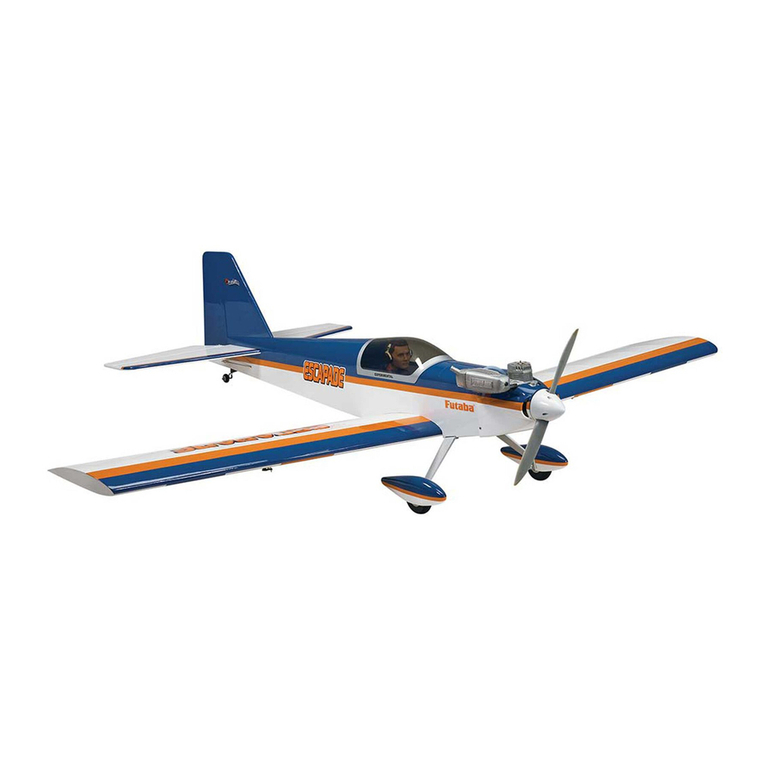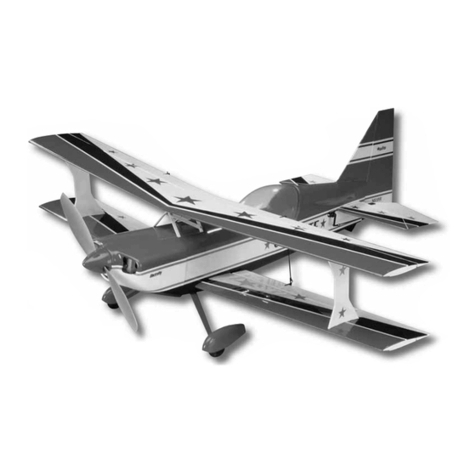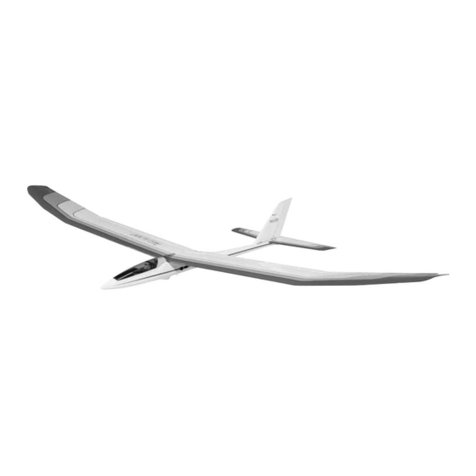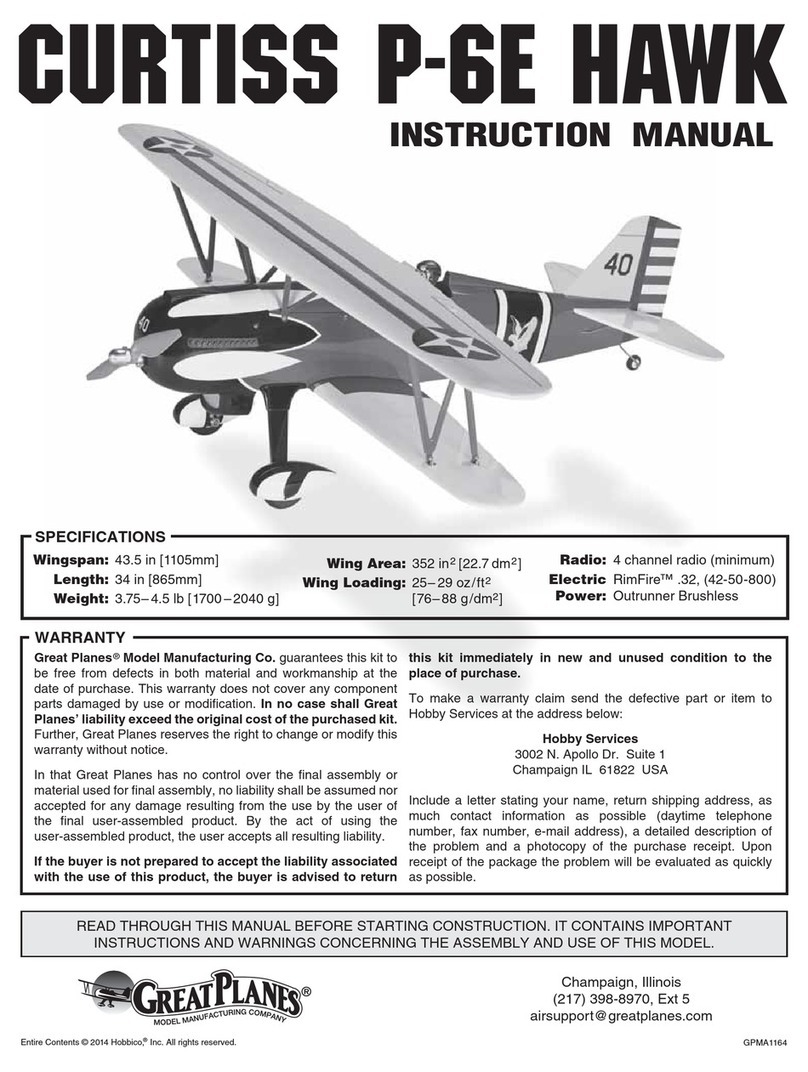
2
TABLE OF CONTENTS
INTRODUCTION....................................................................2
AMA .......................................................................................2
SAFETY PRECAUTIONS ......................................................2
ADDITIONAL ITEMS REQUIRED .........................................3
Adhesives .........................................................................3
Hardware & Accessories ..................................................3
Building Supplies..............................................................3
Optional Supplies & Tools.................................................4
BUILDING NOTES.................................................................4
ORDERING REPLACEMENT PARTS...................................4
METRIC/INCH RULER...........................................................4
KIT INSPECTION...................................................................5
KIT CONTENTS.....................................................................5
ASSEMBLY ...........................................................................6
Mount the Motor & Cowl...................................................6
Mount the Horizontal Stabilizer & Fin................................7
Install the Servos & Radio ................................................8
Hook up the Rudder & Elevator........................................9
Assemble the Wing.........................................................10
GETTHE MODEL READYTO FLY......................................11
Balance the Propeller & Mount the Spinner....................11
Mount the Wing...............................................................11
Apply the Decals.............................................................12
Set the Control Throws ...................................................12
Balance the Model (C.G.) ...............................................12
Balance the Model Laterally............................................13
PREFLIGHT.........................................................................13
IdentifyYour Model..........................................................13
Charge the Batteries.......................................................13
Range Check..................................................................14
ELECTRIC MOTOR SAFETY PRECAUTIONS ...................14
AMA SAFETY CODE (excerpts).........................................14
CHECK LIST........................................................................15
FLYING.................................................................................15
Preflight...........................................................................15
Takeoff ............................................................................16
Flight...............................................................................16
Landing...........................................................................16
Taking Off From Grass....................................................16
OPTIONAL ESC & RECEIVER MOUNTING LOCATION..........17
INTRODUCTION
Thank you for purchasing the Great Planes EP Seawind
ARF. Testing and developing the Seawind was lots of fun.
Immediately we were surprised by how nimble and sporty
this model is. And although the Seawind is a float plane,
hand-launching and grass landings are always an option
when not flying from water.When you do get the opportunity
to fly from water, be certain to read the “FLYING” section
on page 15 of this manual–there are a few water takeoff
and landing techniques that will make your outing more
successful. The Seawind is happiest when the winds are
relatively calm (around 5 - 6 mph or less), but the Seawind
can also be flown in winds around 10 mph (though she does
get “bumped” around some).
For the latest technical updates or manual corrections to this
modelvisit the Great Planes website at www.greatplanes.com.
Open the “R/C AIRPLANES” pull down tab across the top of the
page, then select “ARFs-ELECTRIC.” Scroll down the page and
click on “EP Seawind ARF.” If there is new technical information
or changes an “Important! TECH NOTICE” box will appear in
the upper left corner of the page.Click on theTech Notice box to
read the info.
AMA
WeurgeyoutojointheAMA(AcademyofModelAeronautics)
andalocalR/C club.TheAMAis thegoverningbodyofmodel
aviation and membership is required to fly at AMA clubs.
Though joining the AMA provides many benefits, one of the
primary reasons to join is liability protection. Coverage is not
limited to flying at contests or on the club field.It even applies
to flying at public demonstrations and air shows. Failure to
comply with the Safety Code (excerpts printed in the back of
the manual) may endanger insurance coverage.Additionally,
training programs and instructors are available at AMA club
sites to help you get started the right way. There are over
2,500 AMA chartered clubs across the country. Contact the
AMA at the address or toll-free phone number below:
Academy of Model Aeronautics
5151 East Memorial Drive
Muncie, IN 47302-9252
Tele. (800) 435-9262
Fax (765) 741-0057
Or via the Internet at:
http://www.modelaircraft.org
IMPORTANT!!! Two of the most important things you can do
to preserve the radio controlled aircraft hobby are to avoid
flying near full-scale aircraft and avoid flying near or over
groups of people.
PROTECTYOUR MODEL,YOURSELF
& OTHERS....FOLLOWTHESE
IMPORTANT SAFETY PRECAUTIONS
1. Your Seawind should not be considered a toy, but rather a
sophisticated, working model that functions very much like a
full-size airplane. Because of its performance capabilities, the
Seawind, if not assembled and operated correctly, could possibly
cause injury to yourself or spectators and damage to property.
2.Youmustassemblethemodelaccordingtotheinstructions.
Do not alter or modify the model, as doing so may result in an
unsafe or unflyable model. In a few cases the instructions may
differ slightly from the photos. In those instances the written
instructions should be considered as correct.
3.You must take time to build straight, true and strong.
4. You must use an R/C radio system that is in first-class
condition.
